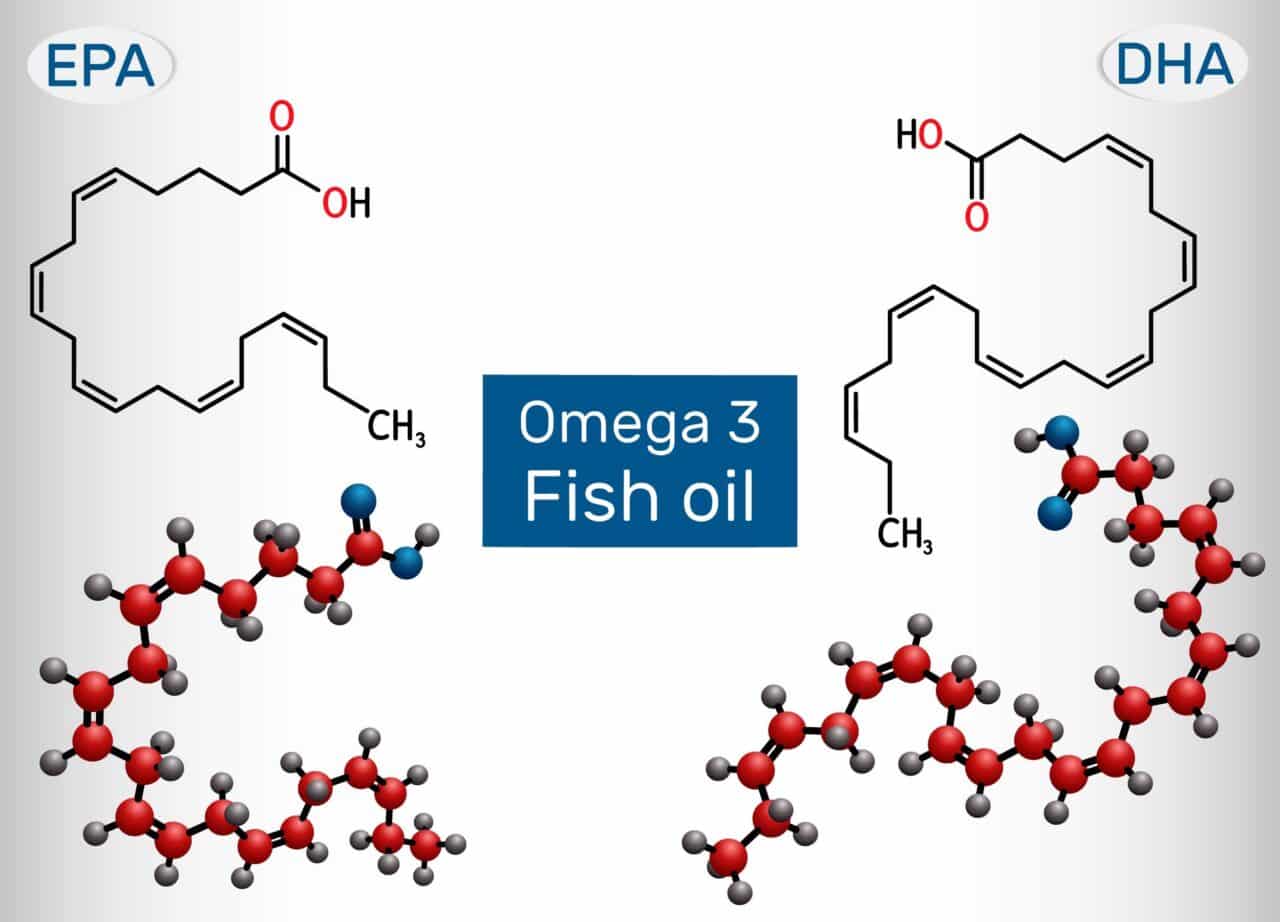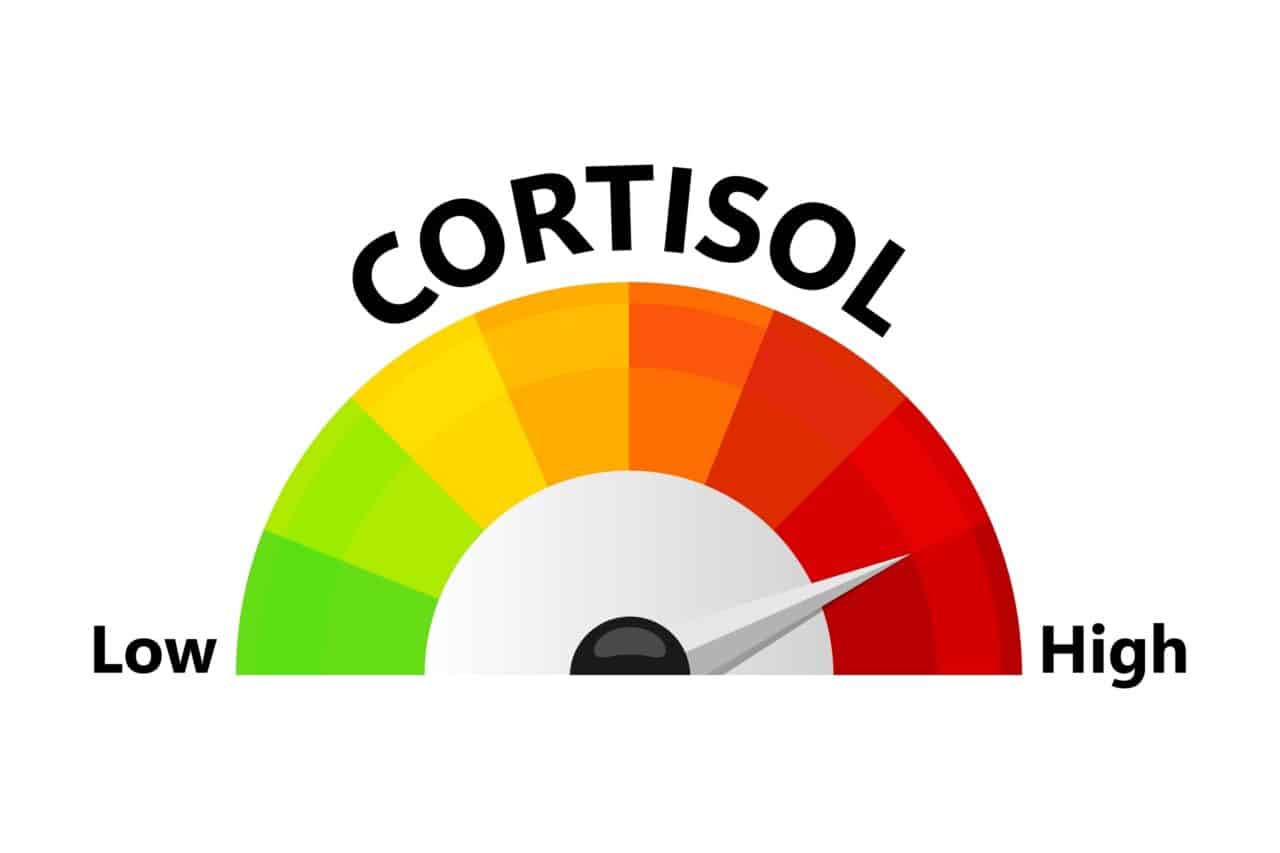What are Omega-3 fatty acids?
What are Omega-3 fatty acids?
The benefits of fish oil have long been acknowledged. Back as far as the 1700s, it was used to treat rheumatism. Then, in the 1800s, it was used to combat rickets, a condition which inhibits bone growth in children. In the 20th century, the cardiovascular benefits of one of its key components, Omega-3 polyunsaturated fatty acids (Ω-3), began to be recognised. For example, a study in the 1970s highlighted the low incidence of coronary disease in Greenland Eskimos and concluded that it was due to the high marine fat content of their diet (23). They subsequently found that EPA, a form of Omega-3 fatty acid, was increased in Eskimo plasma, which had an anti-clotting effect leading to a reduction in coronary heart disease. This stimulated widespread interest and research into Omega-3 fatty acids.
Now numerous studies have shown that supplementation with fish oil derived Omega-3 fatty acids provide a vast range of potential benefits for health and performance beyond reducing the risk of cardiovascular disease. These include, but are not limited to:
- Increasing muscle mass (1,3, 6,11,12, 24)
- Increasing muscular strength (1,2,3,11,25)
- Increasing muscle protein synthesis (1,6)
- Reducing the loss of muscle mass during periods of muscle-disuse (1)
- Reducing post-exercise muscle soreness (4,7,9)
- Enhancing post-exercise recovery (22,27,28,29)
- Reducing exercise induced fatigue (4)
- Enhancing fat oxidation (5,30)
- Reducing inflammation (7,14, 20)
- Increasing maximal oxygen uptake (VO2max) (8)
- Reducing heart rate and oxygen consumption during exercise without decreasing performance (10)
- Reducing body fat (11,12,13,30)
- Reducing cortisol levels (12,26)
- Improving cardiovascular health (13, 23,34)
- Reducing perceived exertion during submaximal steady-state exercise (15)
- Improving exercise economy (15)
- Improving neuromuscular function (16)
- Improving cognition (17,33)
- Enhancing immune function (18,19)
The benefits of maintaining appropriate levels of Omega-3 do not end there. It has also been shown to have a positive influence on brain development and mental health, and reduce symptoms of metabolic syndrome, a cluster of risk factors that increase the chances of developing heart disease, diabetes, and stroke.

What are Omega-3 fatty acids?
Technically speaking, Omega-3 fatty acids are a form of polyunsaturated fat. These are fats in which the hydrocarbon chain possesses two or more carbon double bonds.
They play a vital role in numerous cellular functions in the body, including signalling, cell membrane fluidity, structural maintenance and regulation of the nervous system, blood pressure, blood clotting, glucose tolerance, inflammatory processes, and the development and function of the eye and brain.
Although there are several different types of Omega-3, the majority of research focuses on eicosapentaenoic acid (EPA) and docosahexaenoic acid (DHA), as these have the most direct benefits for health and performance.

Eicosapentaenoic Acid (EPA)
Eicosapentaenoic acid is a form of Omega-3 that is found in high levels in fish oil. It is considered to be a ‘long-chain’ (LC) Omega-3 because it contains 20 carbons.
EPA is used to produce signalling molecules called eicosanoids, which play numerous physiological roles in the body and reduce inflammation.
Docosahexaenoic Acid (DHA)
Like EPA, Docosahexaenoic acid is a form of Omega-3 that is found in high levels in fish oil. It is considered to be a ‘very long-chain’ (VLC) omega-3 because it contains 22 carbons. DHA is a primary structural component of the human brain, cerebral cortex, skin, and retina and plays various important roles in the body, such as aiding circulation and maintaining healthy blood pressure.
Why do we need to supplement with Omega-3?
Although EPA and DHA can be produced in the body from another Omega-3 known as Alpha-linolenic acid (ALA), the conversion of ALA to DHA and EPA is not very efficient in humans. In fact, the body converts only approximately 2–10% of the ALA we consume into EPA and DHA.
It is for this reason, that we are advised to consume approximately 200–300 mg of EPA and DHA per day. The most abundant sources are found in the oils of shellfish, cold-water herring, anchovies, sardines, mackerel, and sea mammals. Consequently, it is generally recommended that we consume two portions of fish per week to meet our EPA and DHA requirements, with at least one being oily fish. Unfortunately, the majority of the UK population does not consume enough fish, particularly oily fish. Consequently, most people are not achieving the recommended intake of EPA and DHA.
This problem is not limited to the UK: In 74% of EU countries the intake was found to be less than the European Food Safety Agency (EFSA) recommendation of 250 mg for EPA and DHA (22). Although EFSA’s recommendation is for the general, healthy population, it seems that athletes are also not consuming adequate amounts despite their higher calorie intake. Analyses of dietary habits of various athletes found that many did not reach the dietary goals for macro- and micronutrients, including EPA and DHA (22).

Omega-6 versus 3: Getting the balance right
Omega-6 are another form of polyunsaturated fatty acid. Their main role is to provide energy. Like Omega-3, they are also essential, and so must be obtained from our diet.
While Omega-3 have a potent anti-inflammatory effect, Omega-6 can be proinflammatory. Therefore, for good health we need to maintain an optimal dietary intake ratio of Omega-6 to Omega-3 of approximately 1–4 :1. (21). However, the modern Western diet, has a ratio in the range of 10 :1 to 20 :1 (21). This imbalance has been accompanied by an increase in chronic inflammatory diseases such as rheumatoid arthritis, cardiovascular disease, non-alcoholic fatty liver disease, inflammatory bowel disease, diabetes, obesity and Alzheimer’s disease. Consequently, by increasing the ratio of Omega-3 to Omega-6 in the Western diet, we may be able to reduce in the incidence of these serious health problems.
It is important to understand that Omega-6 are not inherently unhealthy. For example, a form of Omega-6 known as conjugated linoleic acid can help reduce inflammation and body fat, and provide a host of other benefits, such as increasing muscle and enhancing immune function.
Like many things in life, the key is to maintain the right balance.
Time for Time 4 Omega-3
Traditionally, to enjoy the benefits of fish oils, such as those provided by Omega-3, you had to eat fish or drink cod liver oil. Unfortunately, an often-cited reason for not consuming fish, is a dislike of its taste and smell.
In addition, the problems of contamination with pollutants including heavy metals, such as mercury, polychlorinated biphenyls (PCBs) and dioxins have become more apparent in recent years. Although the consumption of these may not cause problems immediately, they can accumulate in the body, becoming problematic in the future.
This is where Time 4 Omega-3 can be a valuable addition to you nutrition strategy.
What’s in Time 4 Omega-3?
Each 1000mg capsule provides you with our high strength fish oil containing 500mg of EPA and 250mg of DHA, which ensure you achieve the recommended intake, allowing you to attain the many benefits provided by these health and performance promoting fatty acids in an easy to consume format with no taste or odour. If you are worried about contamination, you can rest assured that the fish oil used in Time 4 Omega-3 has been distilled to remove any pollutants and ensure the highest purity.
What does the science about Omega-3?
Here at Time 4 Nutrition, we pride ourselves on employing the findings of the latest cutting-edge research to produce the most effective, innovative, evidence-based products.
As we review a selection of that research, you’ll begin to see why Time 4 Omega-3 is such a great product and how it may benefit you.
Can Omega-3 increase muscle mass?
When we think of supplements that help to increase muscle mass, our initial thoughts are likely to be of substances such as whey protein, branch chain amino acids and creatine, not fatty acids. However, we may be missing a potential opportunity, as a number of recent studies have demonstrated the positive influence of Omega-3 intake on skeletal muscle (1,3,6,11,12, 24). For example, there are reports of gains in muscle size and strength with Omega-3 fatty acid supplementaion as well as evidence that Omega-3 ingestion alleviates the loss of muscle mass during periods of muscle-disuse (1).
A number of these studies relate to older individuals (1,3, 24). For example, Smith et al., (3) found that six months of supplementation with Omega-3 in a group of 60-85 year old men and women, produced significant increases in muscle size in comparison to placebo (7% versus 3.6%).
Would fit, active healthy younger people get the same benefit? The results from a number of studies suggest the answer is yes.
Mangilli and colleagues (11) investigated the effects of 28 days supplementation with Omega-3 on body composition and strength in physically active men. The study was randomised, double–blind, and placebo controlled, considered to be the ‘gold standard’ in research. The results showed that Omega-3 supplementation produced a significant increase in muscle mass in comparison to a placebo. The average lean mass at the beginning of the trial was 64.2 kg, which rose to 66.2 kg on completion of the study.
Another study (12) achieved similar results in a group of 44 men and women with an average age of 34 years. These showed a 0.5kg increase in muscle mass after 6 weeks supplementation with Omega-3 while the placebo showed a 0.1kg reduction.
The results of a study by Smith and colleagues (6) showed that supplementation with an Omega-3 for a period of 8 weeks in healthy men and women aged 25-45 years increased the anabolic response of muscle to amino acids and insulin. This led to an increase in muscle cell size and protein concentration.

Can Omega-3 increase strength?
As we have already seen, supplementation with Omega-3 has been shown to enhance muscle gain. There is also an increasing body of scientific evidence (1,2,3,11,25) that demonstrates their ability to increase strength.
Smith and colleagues (3) found that six months of supplementation with Omega-3 produced significant increase in 1-Rep Max (1RM) strength, handgrip strength, and isokinetic power in comparison to placebo.
The randomised control by Mangilli and colleagues (11) cited earlier not only found increases in muscle size after 28 days supplementation with Omega-3 in physically active men, but also strength. The average 1RM leg extension increased from 115kg before supplementation to 129kg on completion of the study with no increase observed in the placebo group.
Can Omega-3 reduce post-exercise muscle soreness?
If you have exercised for long enough and hard enough you are likely to have experienced post-exercise muscle soreness, also known as delayed onset muscle soreness (DOMS). This is characterised by pain and stiffness in the muscles that occurs a day or two after a new or particularly demanding exercise session. It typically lasts between three to five days, with the most intense pain usually occurring about one or two days after the exercise. The primary cause of DOMS is microscopic tears in the muscle fibres resulting from high-intensity exercise, most commonly, eccentric exercise. This involves tensing a muscle while lengthening, such as the downward phase of a squat, which is why you are most likely to experience greater DOMS after ‘negative reps’. While it can help to stimulate muscle growth, if the pain is excessive or does not resolve relatively quickly, it can hinder your ability to train, which in turn, may inhibit your progress.
Although Omega-3 is well known for its anti-inflammatory properties, it was not until recently, that studies showed that it can reduce the inflammation and pain associated with exercise-induced muscle soreness (4,7,9)
Tartibian and colleagues (9) investigated the effect of Omega-3 supplementation on perceived pain associated with delayed onset muscle soreness after eccentric exercise. The results showed that participants in the Omega-3 group reported significantly less pain 48 hours postexercise, when DOMS typically peaks, in comparison to a placebo.
The results of a study by Jouris et al., (7) showed that supplementation with Omega-3 for a period of 7 days reduced muscle soreness by 15% in healthy men and women 48 hours after performing eccentric exercise. The authors suggest that this information is not only relevant to athletic populations but also to other groups such as physical therapy patients and newly admitted cardiac rehabilitation patients, as muscle soreness, if left unchecked, can slow the progress in adapting to a new exercise program.

Can Omega-3 reduce cortisol levels?
Cortisol is a hormone produced by the adrenal glands, which regulates a wide range of vital processes throughout the body, including metabolism and immune function. It also has a very important role in the body’s stress response.
Physical exercise is a short-term stressor which temporarily elevates circulating levels of cortisol. This is because it helps to increase levels of blood glucose, which can then be used to supply exercising muscles.
Once it is released, cortisol stimulates the production of glucose in the liver from the breakdown of protein and fat, which causes the breakdown of protein in muscle tissue. It is for this reason, that cortisol is referred to as a catabolic hormone, i.e., it breaks down tissue.
After exercise, your cortisol levels should return to their baseline. However, sufficient recovery between training sessions and carbohydrate intake are required to ensure that they are not chronically elevated, which can lead to a loss of muscle mass and other the symptoms of overtraining, such as fatigue and reduced immune function. In fact, the immunosuppressive effects of intense exercise have been linked to high plasma cortisol levels that continue after exercise.
Chronically elevated cortisol levels are also associated with increased abdominal fat and a decrease in testosterone, neither of which are desirable if you are trying to build and maintain a fit, lean physique.
Supplementation with Omega-3 has been shown to reduce cortisol levels, which not only benefit body composition but also provide other less well-acknowledged benefits (12,26).
Noreen et al., (12) investigated the effects of 6 weeks supplementation with Omega-3 on body composition, and cortisol production in healthy adults. The results showed a significant correlation between a reduction in cortisol levels and increase muscle mass and reduction in fat mass in the Omega-3 group in comparison to the placebo.
Madison and colleagues (26) found that 4 months supplementation with Omega-3 not only reduced overall cortisol production by 33% in response to stress, but by lowering overall inflammation and cortisol levels and boosting repair mechanisms during recovery, Omega-3 may slow accelerated aging and reduce the risk of depression.
It is important to understand that cortisol is not inherently problematic, as it is involved in many important processes in the body, such as the sleep/wake cycle, where it helps us to wake up in the morning and feel alert throughout the day. Problems arise when high levels are sustained for a prolonged period.

Can Omega-3 enhance post-exercise recovery?
Optimal performance requires optimal recovery, which can be a complex and lengthy procedure, depending on the demands of the specific exercise undertaken. Typically, it comprises multiple processes, such as those involved in facilitating the growth and repair of muscle tissue and the replenishment of fluid and fuel stores. The quicker and more effectively we recover, the harder and more frequently we can train. As we have already seen, Omega-3 can help reduce the pain and inflammation associated with post-exercise muscle soreness but studies show that it can also enhance recovery in a number of other ways (22, 27, 28,29).
Jakeman and colleagues (27) investigated the effect of a EPA and DHA fish oil supplement taken acutely as a recovery strategy following exercise induced muscle damage. Twenty-seven physically young active males completed 100 plyometric drop jumps to induce muscle damage. Immediately after they consumed either the fish oil supplement or a placebo. The results showed that when the participants were reassessed with a squat jump, there was only a 2.1% decrease in performance in the fish oil group compared 9.8% in the placebo control. Similar findings were observed for countermovement jump performance, with the fish oil group experiencing just 1.7% decrease in performance compared to 6.8% in the placebo group.
Further studies support these findings. For example, Mickleborough and colleagues (29) showed that compared to a placebo, supplementation with the Omega-3 oil significantly attenuated indicators of skeletal muscle damage at 2, 24, 48, 72 and 96 hours after muscle damaging exercise. It also resulted in significantly reduced loss of strength and provided a protective effect against the loss of joint range of motion, which accompanies muscle damage, at 96 hours after the exercise. At 24 hours after the muscle damaging exercise, only the placebo group experienced pain compared to baseline.

Can Omega-3 increase fat loss?
The term ‘body composition’ refers to the distribution of fat, muscle, bone, and other tissues that make up the body.
The two components of body composition that are typically of greatest interest to the majority of people and are most amenable to change as a result of diet and exercise, are muscle mass and body fat. As we have already seen, Omega-3 supplementation can aid muscle gain and there is now an increasing body of scientific literature demonstrating its ability to enhance fat loss (11,12,13).
The results of the earlier cited study by Mangilli et al., (11) not only showed that supplementation with Omega-3 for 28-days produced an increase in muscle mass but also a reduction in body fat of approximately 1 kg (2.2Ibs). Noreen and colleagues (12) found a similar effect with participants losing an average of 0.5kg (1.1Ib) after 6 weeks supplementation with Omega-3, which resulted in an average reduction of body fat of 0.4%. The placebo group experienced an increase in fat mass of 0.2kg, resulting in 0.3% increase in body fat.
Noreen et al.’s results also showed an increase resting metabolic rate in the supplementation group while the placebo group experienced a reduction. Resting metabolic rate (RMR) is simply the amount of energy or calories we expend at rest. This accounts for approximately 50-75% of the total energy we expend in a day, with energy we expend through physical activity and the digestion of the food accounting for the remainder. If we can increase our RMR, this means we are expending more calories at rest and, consequently, increasing our fat loss capability.
Logan and colleagues (30) found that 12 weeks supplementation with Omega-3 resulted in 14% increase in resting metabolic rate and 10% increase in energy expenditure during exercise in group of 24 women. Additionally, there was a 19% increase in the rate of fat oxidation at rest and a 27% increase during exercise.
Non-alcoholic fatty liver disease is a condition in which fat accumulates in the liver. It primarily affects people who are overweight or obese and is present in 85% of obese people. If left unchecked, it can result in liver failure and cardiovascular and metabolic issues including diabetes. Interestingly, Omega-3 levels are decreased in the liver tissue of patients with non-alcoholic fatty liver disease and have been shown to reduce the accumulation of fat in the liver and reduce inflammation.
A systematic review and meta-analysis of nine studies (31), involving 355 individuals, showed supplementation with Omega-3 resulted in a significant reduction in liver fat in comparison to a placebo. A study by Spadaro et al., (32) investigated the effects of Omega- 3 in the treatment of non-alcoholic fatty liver disease. Forty patients were randomised into two groups for 6 months of treatment. One group followed an American Heart Association (AHA) recommended diet and received an Omega-3 supplement while the other just adhered to the recommended diet. On completion of the trial, in the Omega-3 group complete fatty liver regression was observed in 33.4% of the patients, and an overall reduction in 50%. In contrast, no patient achieved complete regression in the diet only group, whereas some reduction occurred in 27.7% of the patients; the remaining 72.2% did not change. The Omega-3 group also experienced other beneficial changes in indicators of liver health.

Can Omega-3 reduce inflammation?
It is well established that inflammation is involved in the development of numerous diseases, including heart disease, cancer, inflammatory bowel disease, and diabetes (7). A variety of medications have been used traditionally to treat such conditions with varying degrees of success. More recently, the powerful anti-inflammatory effects of Omega-3 are gaining greater recognition, with EPA and DHA from fish oil proving to be most potent (20).
Simopoulos (20) reviewed a number of clinical trials which assessed the benefits of dietary supplementation with fish oil derived Omega-3 in several inflammatory and autoimmune diseases in humans, including rheumatoid arthritis, Crohn’s disease, ulcerative colitis, psoriasis, lupus erythematosus, multiple sclerosis and migraine headaches. The results revealed that supplementation provided a significant benefit, including decreased disease activity and a reduced use of anti-inflammatory drugs.
Can Omega-3 improve cognition?
Cognition is vitally important because it encompasses all the mental processes that allow us to receive, select, transform, store, and retrieve information. The consumption of healthy foods and enriched diets have been associated with improved cognition and brain health for some time. The key nutrients common to many of these are Omega-3.
Loong and colleagues (33) found a clear association between Omega-3 levels and brain volume and cognition in older adults, with increased levels of Omega-3 being associated with better memory, processing speed, and structural brain measures.
Such benefits are not the preserve of the elderly. Baur and colleagues (17) found that after supplementation with EPA, young adults’ brains worked more efficiently and achieved better cognitive performance.

Can Omega-3 enhance immunity?
Our immune system is a complex network of intricate stages, specialised cells and pathways in the body, that are working together constantly to keep us well by fighting off threats to our health from simple colds to cancer. While a minor infection, such as a common cold or gastrointestinal upset, may just be a slight inconvenience for many people, it can limit an athlete’s ability to train and even compete in major competitions. So, while maintaining a healthy, efficient and robust immune system is important for us all, it is particularly important for this group, yet can be made more difficult due to the demands of intensive training.
It has long been established that a healthy and balanced diet is essential for optimal immune function. Omega-3 have been investigated for decades and shown to have a significant impact on the immune system, particularly EPA and DHA.
Gray and colleagues evaluated the effects of supplementation with fish oil on the immune response to an acute bout of endurance exercise, which can alter immune function (18). Sixteen male subjects participated in a six-week double blind randomised placebo-controlled trial. They consumed either fish oil supplement, which increased EPA levels, or a placebo. The results showed that 3 hours after a 1-hour bout of endurance exercise on a cycle ergometer at 70% of maximum effort, participants in the fish oil group experienced an increase in activity in PBMC IL-2, signalling molecule in the immune system, which plays a key role in the body’s natural response to microbial infection, and NK cells. These are a type of white blood cell that play a crucial role in our immune system by detecting harmful cells and destroying them.
A recent review of the literature relating to Omega-3 and immune function (19) showed that they can have a positive affect on many important cells in both our innate immune system, which we are born with and is our first line of defence, and our adaptive system, which we acquire to boost our defence against infection and disease. These include macrophages, neutrophils, and T-cells.
Can Omega-3 improve cardiovascular health?
The beneficial effects of Omega-3 on cardiovascular health have been recognised for more than half a century. So potent are they that there are now licenced medications for cardiovascular disease, whose principal component is Omega-3. For example, Vascepa is a trade name for icosapent ethyl, a high-purity EPA. It is used in conjunction with other interventions to lower blood triglyceride levels, and so reduce the risk of heart attacks and strokes.
The reduction in risk of serious cardiovascular event occurring after Omega-3 supplement are considerable. For example, in the ASCEND trial (A Study of Cardiovascular Events in Diabetes), death due to cardiovascular disease was reduced by 19% with EPA and DHA supplementation (34).
After reviewing the current research on the effects of Omega-3 on cardiovascular risk, Kris-Etherton and colleagues (34) suggest that the evidence for the protective effective of Omega-3 for primary prevention is so compelling that emphasis should be placed on ensuring that the population’s intake of Omega-3 reaches recommended levels through either consuming more fish/seafood or taking a supplement.
‘Stacking’ with Omega-3
‘Stacking’ is a term often used to describe the practice of taking multiple substances simultaneously to increase their effect. A number of studies have investigated the effects of ‘stacking’ Omega-3 with a variety of supplements. For example, combining vitamin D and Omega-3 has been shown to provide a 28% reduction in the risk of heart attacks, 50% reduction in the risk of fatal heart attacks, and 17% reduction in the risk of total coronary heart disease events (34).
The results of a randomised double blind control trial by Nilsson and colleagues (35) showed that a combination of whey protein, micellar casein protein, creatine, vitamin D, and Omega-3 provided a significant increase in muscle mass, strength, overall muscle quality and functional ability in older resistance trained men.
The combination of a protein supplement with Omega-3 has also been associated with improvements in muscle function in a very different group: professional Rugby Union players. Black et al., (4) found that 35 days of supplementation with Omega-3 and protein produced a reduction in muscle soreness and fatigue and better maintenance of explosive power in comparison to a placebo during pre-season training.

How do Omega-3 work?
Although the benefits of fish oil and Omega-3 have been acknowledged for a considerable time, science is still shedding light on the underlying mechanisms responsible for these.
For example, the primary means by which Omega-3 positively impact skeletal muscle mass is via incorporation of EPA and DHA into membrane phospholipids of the sarcolemma, the fine sheath that covers muscle fibres, and small structures within the muscle cells (1). Phospholipid membranes are thin membranes made of two layers of lipid, or fat, molecules. Enrichment of EPA and DHA in these membrane phospholipids is linked to enhanced rates of muscle protein synthesis and decreased expression of factors that regulate muscle protein breakdown. However, exactly how incorporation of EPA and DHA into phospholipid membranes alters these processes is still not fully understood.
With regard to inflammation, Omega-3 appear to exert their influence through a variety of mechanisms; many of these are mediated by, or at least associated with, changes in fatty acid composition of cell membranes, the thin wall that surrounds the cell. Therefore, the fatty acid composition of cells involved in the inflammatory response influences their function. Increasing the membrane content of EPA and DHA increases the production of anti-inflammatory and inflammation resolving substances (14).
The mechanisms which contribute to Omega-3’s ability to improve cardiovascular health include lowering triglyceride levels, increasing HDL cholesterol (‘good cholesterol’), and enhancing the arteries’ ability to dilate (13). EPA has also been shown to have an anti-clotting effect leading to a reduction in coronary heart disease (23).

In conclusion….
The evidence is clear: having optimal Omega-3 levels is essential for optimal health and performance. The evidence is also clear that here in the West we are not consuming enough Omega-3 containing foods. Even if you are an athlete eating what appears to be a nutritious, well balanced diet with copious amounts of fruit, vegetables and lean proteins, studies show you are unlikely to be getting sufficient Omega-3. This has resulted in an imbalance between the anti-inflammatory Omega-3 and the pro-inflammatory Omega-6 fatty acids, which is associated with a range of health issues. The problem is that the most abundant sources of Omega-3 are found in the oils of shellfish, cold-water herring, anchovies, sardines, mackerel, and sea mammals. Unfortunately, the majority of the population does not consume enough fish, particularly oily fish. Consequently, most people are not achieving the recommended intake of Omega-3. This may be due to a general dislike of the taste and smell of fish or concerns regarding contamination. This is where Time 4 Omega-3 can be a valuable addition to you nutrition strategy. Each 1000mg capsule provides you with our high strength fish oil containing 500mg of EPA and 250mg of DHA, which ensure you achieve the recommended intake, allowing you to attain the many benefits provided by these health and performance promoting fatty acids in an easy to consume format with no taste or odour. If you are worried about contamination, you can rest assured that the fish oil used in Time 4 Omega-3 has been distilled to remove any pollutants and ensure the highest purity. Having reviewed just a small selection of the compelling evidence supporting supplementation with Omega-3, can you afford not to increase your intake of these vitally important fatty acids with Time 4 Omega-3?

